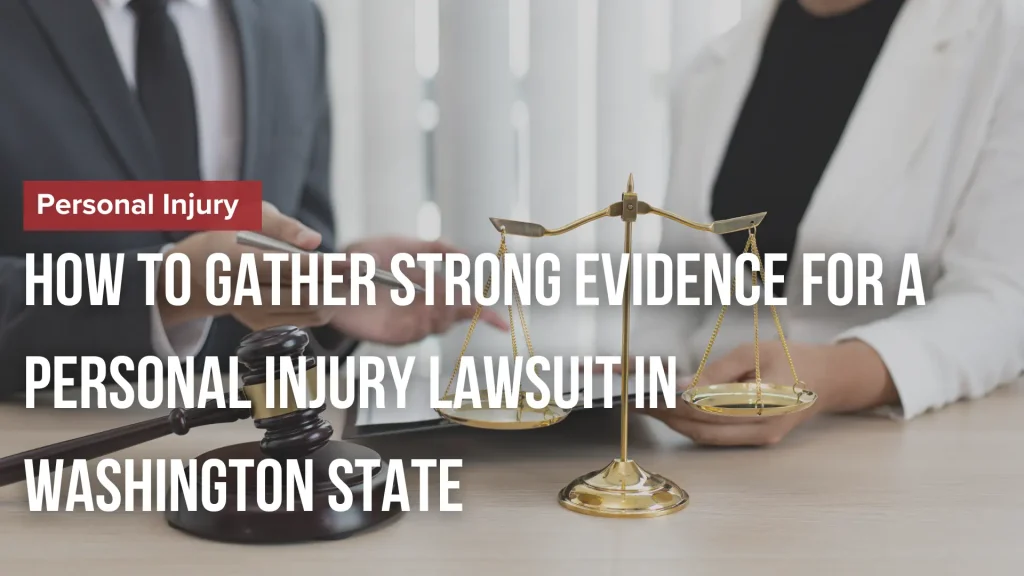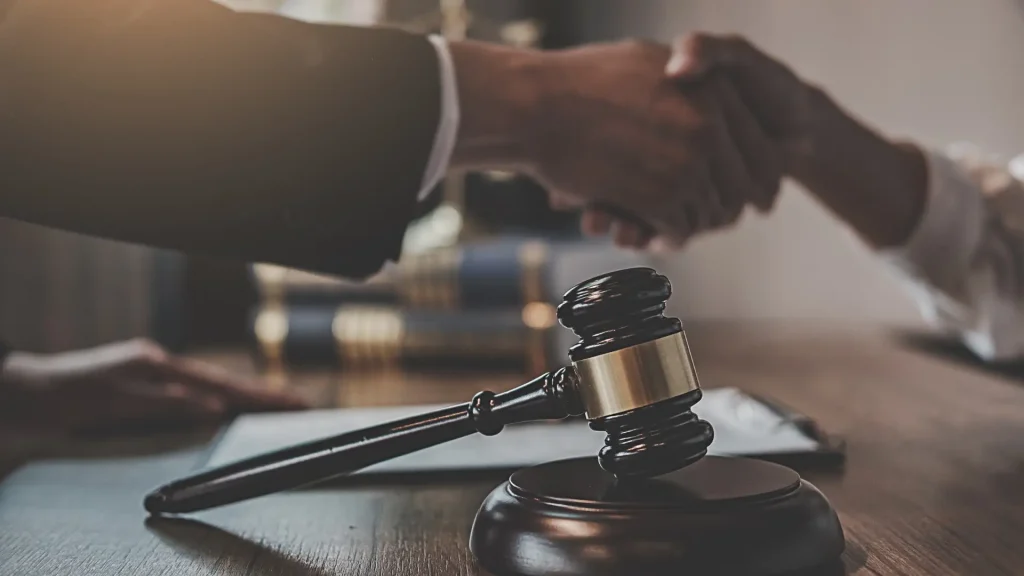
Washington personal injury lawyers will always tell you the same thing: strong evidence makes a strong case. After an accident, you might feel overwhelmed, in pain, and unsure of what to do next. However, the quality of your evidence will shape what comes next in your legal claim—which is why it’s so important to understand how to gather evidence for an injury lawsuit effectively.
No matter how clear the negligence may seem, your case will need solid proof. Medical records, photos, and eyewitness accounts all help tell the story of what happened. Without them, insurance companies and juries may doubt the seriousness of your injury or the role someone else played in causing it—making it crucial to know how to gather evidence for a strong personal injury claim.
The earlier you begin documenting what happened, the more control you will have over your personal injury case. You will give your legal team the tools they need to take action on your behalf.
Why Gathering Evidence Is Critical in an Injury Lawsuit
Evidence drives the outcome of any personal injury case. It answers the most critical questions: What happened? Who caused it? How badly were you hurt? And what losses have you suffered as a result?
You might know the truth, but a court will only consider what you can prove. That proof must show negligence, harm, and a connection between the two. A strong claim could fall apart without proper legal evidence of personal injury.
Insurance adjusters often question the common extent of injuries or argue that a victim shares the blame. Strong evidence shuts those arguments down. It removes doubt, supports your credibility, and increases the likelihood of a fair outcome.
If your case goes to trial, the evidence will serve as the backbone of your lawsuit. It will guide courtroom strategy, support witness testimony, and persuade jurors who weren’t there to see what you went through.
Please read more about lawsuit mediation here: Transparency marks Montana sex abuse lawsuit mediation
Types of Evidence You Should Collect
Different types of evidence will support other parts of your case. You won’t need every form listed here, but the more complete the picture, the better your chances of success:
- Accident Scene Evidence – Take photos for your injury case right away. Capture damage, skid marks, hazards, weather, and injuries from several angles.
- Police Reports – Request a copy of the police report. It will include key details like location, parties involved, and citations.
- Medical Records – Visit a doctor as soon as possible. Medical files will show what injuries you suffered, how you’ve treated them, and what recovery looks like moving forward.
- Witness Statements – Write down the names and contact details of anyone nearby. Their firsthand accounts may help clarify what happened and who caused it.
- Lost Wage Documentation – Save anything that shows your income and time away from work – pay stubs, tax forms, or a note from your employer.
- Digital Evidence – Save GPS logs, dashcam clips, security footage, or texts that support your account and challenge conflicting claims.
- Physical Evidence from the Accident – Keep broken property, damaged clothing, or other items that help show what happened.
- Injury and Recovery Journal – Regularly log your symptoms, pain levels, and missed activities. These notes add context to your medical records.
- Expert Testimony – Your lawyer may involve specialists to explain technical issues and strengthen your position.
Each of these categories adds something valuable. Your evidence doesn’t have to be dramatic – it just has to be detailed, honest, and consistent.
Tips for Preserving and Presenting Evidence
Collecting the right materials is only part of the process. You will also need to preserve and present them clearly, in ways that strengthen your legal position:
- Act quickly – Time-stamped photos of your injury and the accident scene will carry the most weight. Memories fade, items get repaired, and witnesses become harder to find as time passes.
- Stay Organized – Keep everything in one place. Create folders for medical records, receipts, accident photos, and written logs. If you share items with your lawyer, use digital copies whenever possible.
- Back Up Digital Files – Store your files in more than one location. Save photos, videos, and messages to the cloud or a secure drive so you never risk losing them.
- Avoid Alterations – Don’t crop or edit photos, and don’t throw away damaged property or clothing. Preserving case evidence in its original form will carry more weight in court.
- Track Recovery Consistently – You might forget details of your pain or missed activities if you wait weeks to document them. Write things down daily or weekly to maintain consistency.
- Follow Doctor’s Instructions – Doing what your medical team recommends will show that you took your recovery seriously. That makes it easier to connect your treatment and expenses to the accident.
- Let Your Lawyer Review Everything – Before submitting anything to an insurer or opposing party, share it with your attorney. They will decide how and when to present each piece of evidence for maximum impact.
Even one strong piece of evidence can shift the direction of a case. But when you layer those pieces together – photos, reports, records, testimony, and documentation – you create a claim that stands on solid ground.
How Strong Evidence Will Support Your Claim

A good lawyer will demand and build the case around your evidence. They will show how each part connects to the next: how someone else acted carelessly, how that act caused your injury, and what that injury has cost you.
Photos and videos show the event. Medical files explain the damage. Witnesses tell the story. Records show the impact on your job, family, and life. Together, those materials create a timeline and a picture that no insurer or juror will ignore.
With the correct documentation, you will be able to:
- Prove negligence without relying on memory alone
- Respond to insurers who try to blame you or downplay your condition
- Justify the costs of your treatment and recovery
- Support non-economic claims for pain, inconvenience, or disability
- Strengthen your lawyer’s position at the settlement injury table or in court
Every case comes down to facts. The clearer you make those facts, the stronger your claim becomes.
Call Tamaki Law to Build a Case That Holds Up
At Tamaki Law, we build personal injury cases around objective evidence, not guesswork, not assumptions. Our Washington personal injury lawyers will help you document everything from day one, so your claim doesn’t rest on anyone else’s word but your own.
Our team is here to help you understand your rights and take the first step toward securing the necessary benefits. We will work with your doctors, gather your records, and prepare every piece of personal injury legal proof to support your claim. We’ll walk you through each step if you need help figuring out how to gather evidence for an injury lawsuit. Contact us today at (800) 801-9564 to get started.
